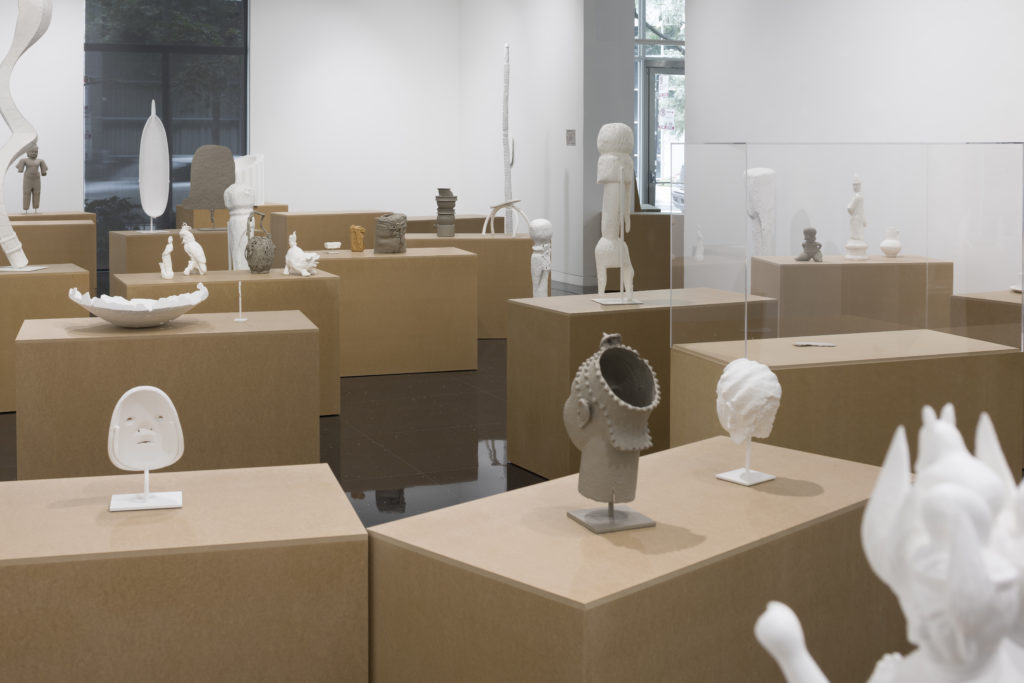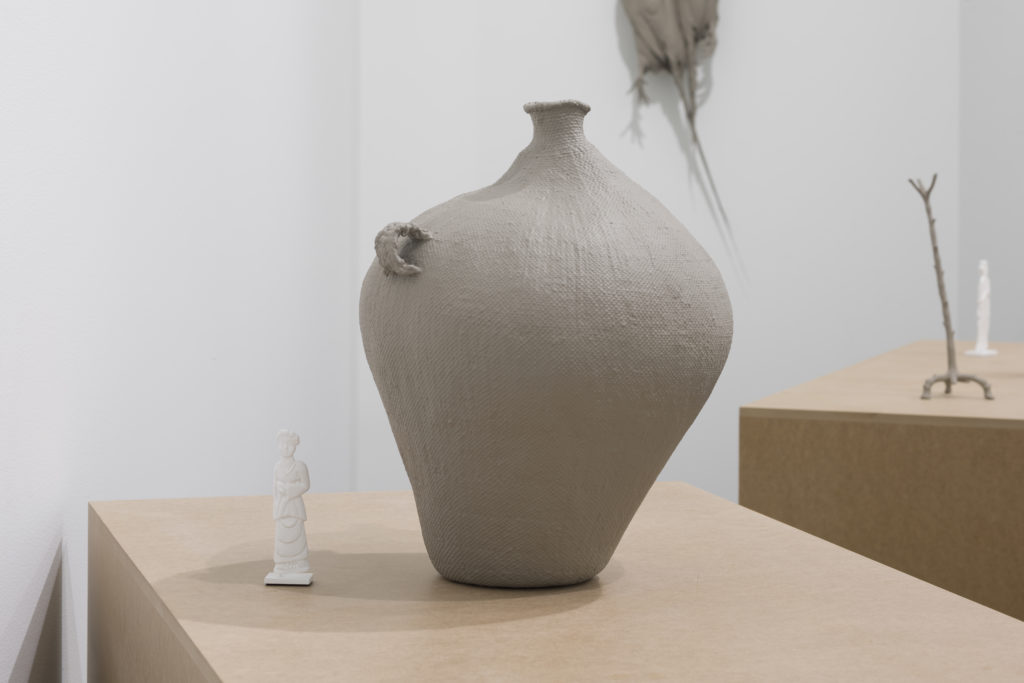Gaylen Gerber: Arts Club of Chicago
by Noah Hanna

In 1953 Marcel Duchamp distributed candy to the guests of a Bill Copley exhibition in Paris. The individually packaged treats were wrapped in foil and bore the statement: ‘A Guest + A Host = A Ghost.’ Though Duchamp was no stranger to wordplay in his work, nor was this small performative gesture likely meant to evoke tremendous contemplation on the part of the receiver, it did however embody Duchamp’s concept of infrathin. Infrathin, to Duchamp was a means to define undefinable separations—the warmth of a newly unoccupied seat or sculptures cast from the same mold.
There is an essence of infrathin in the work of Gaylen Gerber at the Arts Club of Chicago. For Gerber’s first survey the gallery has compiled artifacts collected by the artist, each which has been universally entitled Support. Though Gerber’s Supports are tremendously varied, ranging from the mundane to the fantastic, the collection speaks to higher considerations, due chiefly to its uniformity instilled through coats of gray and white paint that engulf each object. Much like the porcelain of Duchamp’s Fountain, Gerber encourages the viewer to consider provenance and the limitations of objectivity. Yet, the work found here does not exist solely to provoke the barriers of material value, rather many of Gerber’s Supports are in fact objects of significant worth on their own accord prior to the artist’s intervention. Through auction houses and private sales, Gerber has acquired a selection of works of substantial art historical value: Mesopotamian earthenware, fifteenth-century Chinese ceramics, and nineteenth-century African woodwork amongst many others, each painted white or gray in a gesture of universality. Placed alongside aluminum cans, cigarette boxes, and movie props of which the artist has given equal attention, Gerber’s installation urges us to consider shared histories and the poignancy of communication between objects. Similarly, the decision to disproportionately weigh the space, filling one gallery densely with objects, while leaving the other relatively bare, emphasizes the criticality of communal space between human presence and the art object. Entering conversation with Gerber’s Supports means accepting the narratives they expound and with the artist notably obscured, we are left to listen only to the chorus of the objects as they exist.

That being said, Gerber’s absence from the final composition does raise the questions to the efficacy of his interventions. By taking a Modernist approach focusing solely on objectivity, it can be argued that Gerber’s Supports negate the original context of the object. Though each Support retains its original didactic information, the relationship between the primordial creator, whether historically notable or not is lost in an effort to approach communality. Though certainly not the only artist to reframe ancient or precious objects, Gerber walks a thin line. Rather than reconstruct through new mediums as artist Michael Rakowitz has done with antiquities destroyed in the Middle East, Gerber builds on the original mold. When the sanctity of art objects nears godliness, such a gesture is provocative to say the least. Yet as Roberta Smith says of Gerber’s work “…[it] succinctly and insouciantly extends other 20th-century artistic concerns, among them the ready-made, appropriation, collaboration and homage as a form of transgression in the vein of Robert Rauschenberg’s ‘Erased de Kooning Drawing’ of 1953.” Smith’s analysis of Gerber is illuminating, in that it reminds us that Gerber is merely another practitioner in an ongoing history of artistic reformations. It is not that Gerber is unaware or at worst negligent in his treatment of historical objects, rather he is creating work through a methodology that has long been tried and challenged. Like Rauschenberg, modification is not enacted as a gesture of erasure or negation, rather Gerber’s layers of paint emphasis the criticality of the original and the perpetually amorphous existence of authorship. With this perspective in mind, as viewers are drawn back to the object’s creator, whether an unknown sculptor or a figurehead of Western Modernism.
Gerber’s practice can be difficult to place within the current zeitgeist of contemporary art. As issues of representation, acquisition, and authority are increasingly necessitous, Gerber’s Modernist sympathies can be interpreted as regressive, rehashing century old debates on Duchampian conceptualism while critical contemporary discourse is relegated to second-hand interpretation. Yet, despite his apparent affinity for Modernism, Gerber’s work in its current manifestation is an admirable intermediary between traditional art history and contemporary critical theory, passing between long histories of artistic consumption and contemporary hyper-awareness. Returning to Duchamp’s infrathin and his ghost pun, scholar Stephen Jay Gould interpreted infrathin as the foundation of human brilliance in which all objects expand from singularity into a cacophony of meanings and signification. In a similarly minimalist gestures, Gerber conjures a common sensation.
Gaylen Gerber ran at the Arts Club of Chicago September 20 – December 21, 2018.